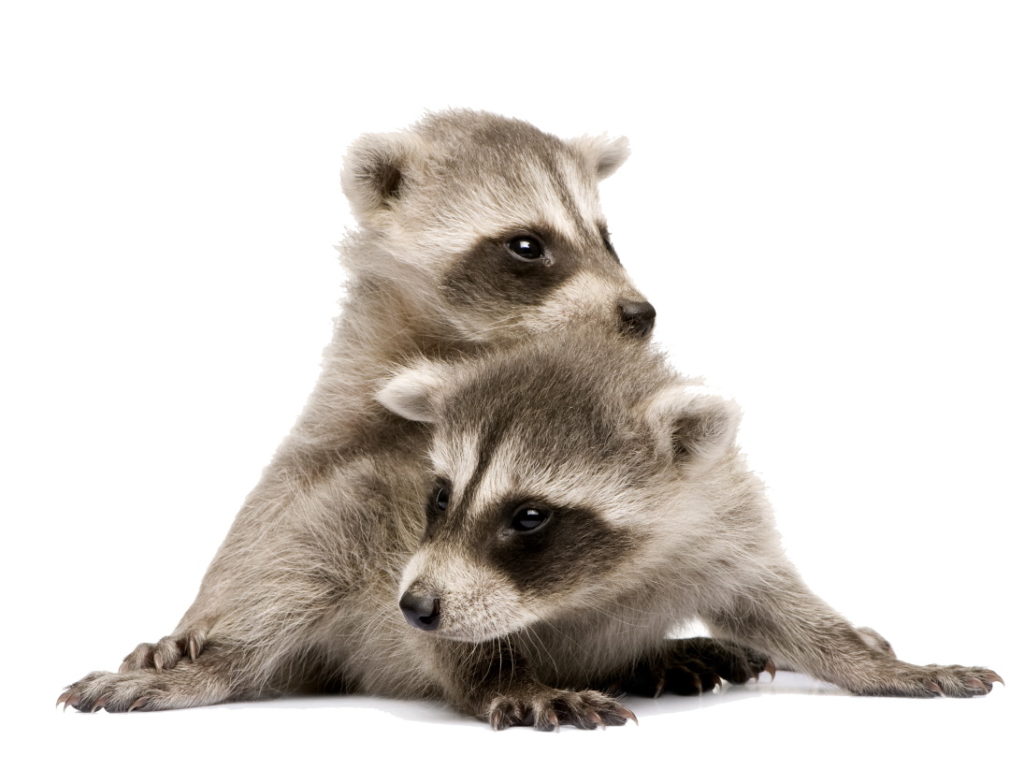
Raccoons (Procyon lotor) are widely spread out throughout North America, extending from Mexico into parts of Canada and almost continually between both coasts. Raccoons drastically increased in density starting in the 1940s with an associated boost in distribution. Jackson MI raccoon removal services has seen a large increase in the animal’s population. Today they are in the mountains and deserts where they were formerly rare or absent.
During the 20th Century, Raccoons were introduced to other parts of the world and can be found in countries like Germany, Russia and Japan.
Description
Contents
Raccoons are categorized as medium-sized predators. They have a stocky upper body and short limbs. Their hind legs are longer than their front legs so they have a hunched look. Their forefeet have 5 dexterous toes, allowing them to grasp and control food and other products. They have a mask of black fur that covers their eyes and a ringed tail. Grownups can weigh between 15 and 40 pounds and are 23 to 37 inches in length.
Ecology
Habitat
Historically found in forests, wetlands and along river and stream passages, the extremely adaptable Raccoon has actually learned to prosper in close proximity to human beings. Now Raccoons are typically discovered in residential areas and even busy cities.
Dens
Raccoons make dens in hollow trees, rock crevices, or burrows dug by other animals, and in storm sewage systems, crawl spaces, chimneys, and attics. Except during extreme weather conditions or when a mom is denned with her young, Raccoons do not inhabit a den for more than a couple of days. Females who are disrupted will often move their young to new dens. Raccoons do not hibernate, however, they do live off body fat when food is scarce during the winter.
Family Structure and Development

The breeding season extends from late winter season through early spring. Females usually deliver between April and June to a litter of three or four children, typically called kits. The kits remain in their birth den up until they are about 7 weeks old, at which point their mother moves them to a series of alternate dens. In some parts of the country, young Raccoons spend their very first winter with their moms. In Western Washington, many split up from their moms in the fall.
Foraging
Being opportunistic omnivores, Raccoons will eat almost anything, however, they are fond of food discovered in water including crayfish, crabs, frogs, and fish. They also eat fruit, veggies, nuts, insects, and little animals. They will easily take advantage of improperly stored garbage and pet food.
A captive raccoon can live for more than 20 years. A raccoon can live for about 5 days without food and water.
Behavior
They are primarily nocturnal, Raccoons can be active during the day. Raccoons have really great hearing and have outstanding night vision, but their very delicate sense of touch is what sets them apart from other carnivores. They will typically rub and roll things in their hands. They will even rub their hands together when they are not holding anything.
Raccoons are often seen rolling their food around in the water, but contrary to popular belief, Raccoons do not clean their food before consuming it. Scientists have discovered that Raccoons’ forepaws are even more delicate when damp.
Raccoons are also extremely smart and good at resolving complicated problems. Some measures of intelligence have placed Raccoons above felines but listed below primates in their capability to distinguish between things. They have exceptional memories and can remember the solution to problems for approximately 3 years without support.
Keep– or Get– Them Out of Your House
In some cases, female Raccoons might use chimneys as dens to give birth and care for their young. Stop this from happening by topping all chimney openings. If you have a feeling Raccoons are present, do not attempt to smoke them out.
Raccoons may likewise look for shelter under decks, in crawl spaces, or in attics, where they can get through loose boards or big holes. If you think Raccoons are residing in these areas, assume there are young in there from early spring through summertime. Wait till the babies are old enough for their mom to move them prior to you taking any actions to force them out.
When you are positive there are no young kits present, drive Raccoons away by installing bright, flashing lights, turning on a radio and set it to a talk station, and hanging mesh bags filled with mothballs or soaked in ammonia. When you think the animals have left, tack a sheet of plastic over the entry and check later to see if animals have broken through it. Make sure to leave the light and radio on until there is no sign of activity, then seal the entry completely.
Sometimes, Raccoons will venture into houses through pet doors when they smell food on the other side. Stay calm, close surrounding interior doors, leave the space and let the animal find his way out of the family pet door or out of an open door or window.
Also Read:
When Do Baby Raccoons Leave the Nest
